How to Plant Mango Seeds
- February 12, 2024
- 0 comment
The mango, scientifically known as Mangifera indica, is not just a fruit; it’s a tropical symbol of sweetness, richness, and flavor. Revered as the king of fruits, mangoes are loved globally for their delightful taste and impressive health benefits. Growing your own mango tree is not only a rewarding horticultural adventure but also a way to connect with nature and enjoy fresh, home-grown fruit.
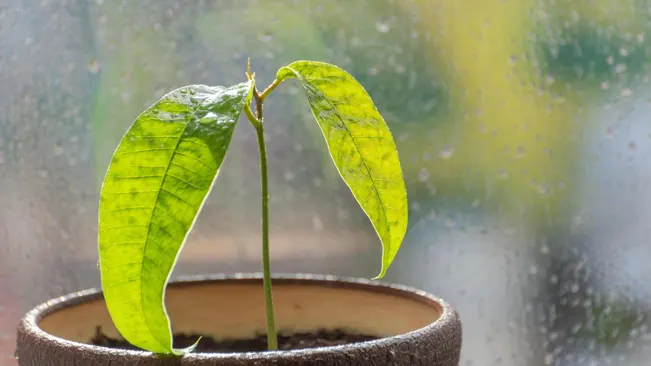
Selecting the Right Mango Seeds
The journey of growing a mango tree begins with selecting the right seed. Opt for a healthy, ripe mango because a good fruit is indicative of a good seed. To identify viable seeds, look for ones that are full and plump; they should feel heavy for their size and not have any cracks or holes. Viable seeds have a higher chance of germinating and growing into healthy trees.
Healthy, Ripe Mango: The seed’s potential largely depends on the health and ripeness of the mango fruit. A well-nourished, ripe mango is more likely to contain a seed that can germinate effectively. Unripe or overripe mangoes may have seeds that are less viable.
Identifying Viable Seeds
- Full and Plump Appearance: A viable mango seed typically looks full and plump. This appearance suggests that the seed has developed properly within the fruit.
- Weight Consideration: The seed should feel heavy for its size, indicating a good amount of nutritional content and moisture, both essential for germination.
- Intact and Damage-Free: Check the seed for any signs of cracks, holes, or other damages. A damaged seed may be susceptible to disease or may not germinate at all. It’s also possible that seeds with visible cracks or holes could have been exposed to pests or environmental stressors.
The Correlation Between Fruit and Seed Quality
Good Fruit Equals Good Seed: Generally, a healthy and delicious mango will house a quality seed. This is why selecting the right fruit is as important as selecting the right seed.
Varietal Considerations: Consider the variety of mango when selecting your seed. Some varieties are better suited for certain climates or soil types. If you’re looking for specific characteristics in your mango tree, like size, taste, or growth habits, these can be influenced by the variety of mango seed you plant.
Alphonso (Hapus)
Originating from India, Alphonso mangoes are highly regarded for their rich, creamy, tender texture and delicious, sweet flavor. They are often considered one of the best varieties of mango.
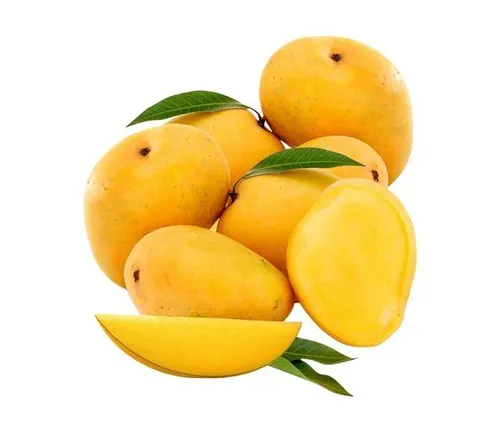
Kent
These mangoes, popular in the United States, are large, juicy, and sweet with a wonderful creamy texture and deep yellow to orange flesh. They have minimal fibers, making them a favorite for eating fresh.

Ataulfo (Honey or Champagne Mango)
This smaller, kidney-shaped mango from Mexico is sweet with a creamy, buttery texture and a vibrant yellow color. It has a thinner pit, which means more flesh to enjoy.

Haden
Originating in Florida, the Haden mango is bright red with green and yellow overtones and small white dots. It’s known for its rich aroma and a flavor that is both sweet and tart.
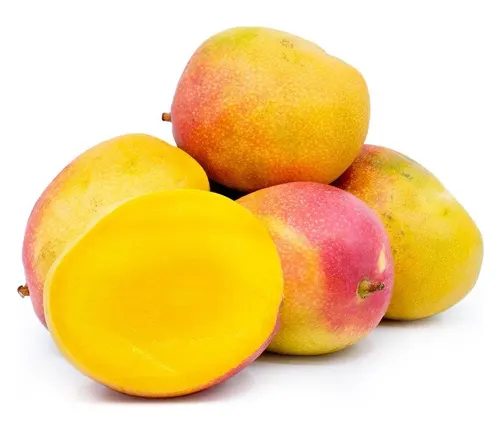
Tommy Atkins
This is a widely available variety known for its dark red color with green and orange-yellow accents. It’s slightly fibrous with a mildly sweet taste.
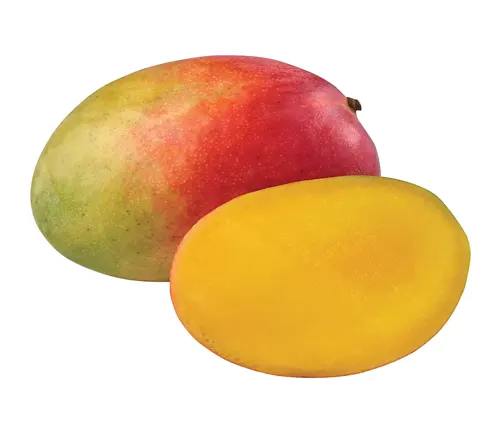
Keitt
Large in size and often staying green when ripe, Keitt mangoes are from Florida. They are sweet with a hint of tartness, have a fibrous flesh, and are great in salads or used for juicing.
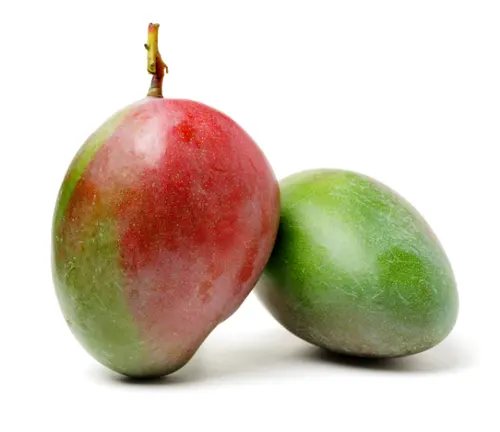
Dashehari
This variety is very popular in North India. Dashehari mangoes are known for their green peels and highly aromatic and sweet yellow flesh.
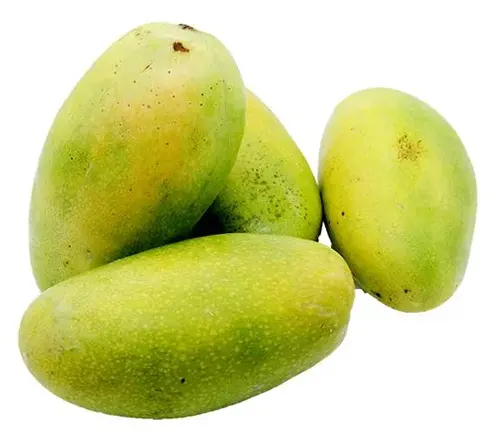
Kesar
Another Indian variety, Kesar mangoes have a bright orange color and are known for their sweet and highly aromatic flavor. They are often used in making mango pulp and desserts.
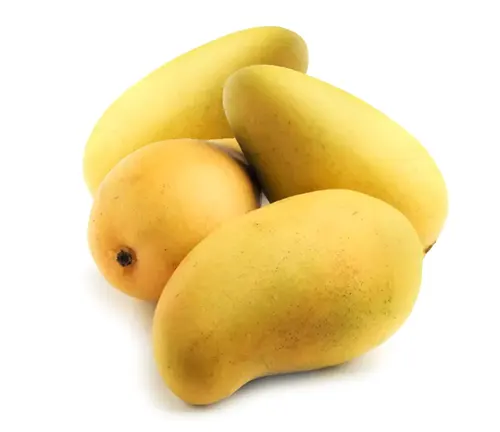
Badami
Also known as ‘Karnataka Alphonso’, it’s a leading mango variety from India. Badami mangoes are similar in taste and texture to the Alphonso variety.
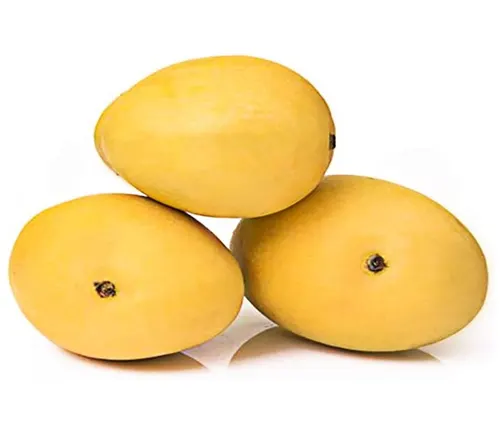
Francis
Grown in Haiti, Francis mangoes are distinctive for their rich, spicy and sweet flavor. They have a bright yellow skin with green overtones and are slightly S-shaped.
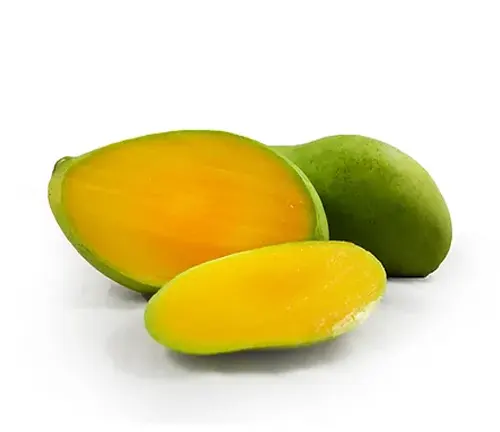
Chausa
Popular in North India and Pakistan, Chausa mangoes have a bright yellow skin, are extremely sweet and aromatic, and have a smooth, fiberless flesh.

Langra
This Indian variety is known for its greenish-yellow skin and exceptionally sweet taste. It’s typically available mid-season and maintains its green color even when ripe.

Preparing Mango Seeds for Planting
1. Extraction
Cutting the Mango
Carefully slice the mango, avoiding the center where the seed is located. You want to extract the seed without cutting into it.

Removing the Seed
Gently pry open the mango halves and remove the seed from the core. The seed is encased in a husk, which is hard and woody.

Handling the Seed
Handle the seed delicately to avoid damage. The outer husk is tough, but the seed inside can be quite sensitive.
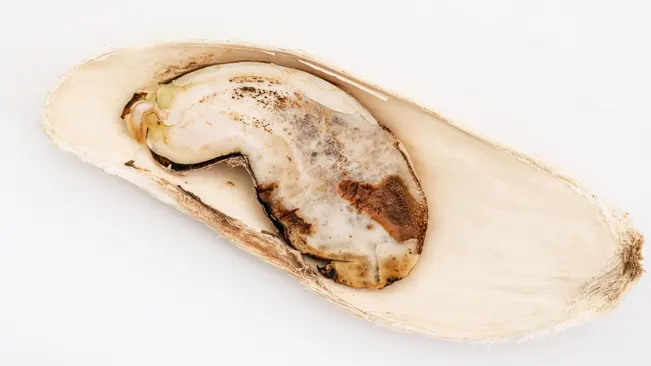
2. Cleaning
- Rinsing the Seed: Rinse the seed under cool, running water to remove any clinging fruit flesh. This residue, if left on the seed, can attract mold or fungus that can harm the seed.
- Drying the Seed: Pat the seed dry with a clean cloth. It’s important to remove excess moisture to prevent rot.

3. Preparation for Germination
- Opening the Husk: Carefully cut or pry open the hard outer husk to reveal the actual seed inside, which is usually a pale, creamy color.
- Moist Environment: Wrap the seed in a damp (not soaking wet) cloth or paper towel. Alternatively, you can partially submerge the seed in a jar of water. The top half of the seed should be above water.
- Warmth and Light: Keep the seed in a warm place with indirect light. A temperature between 70-75°F (21-24°C) is ideal for germination.
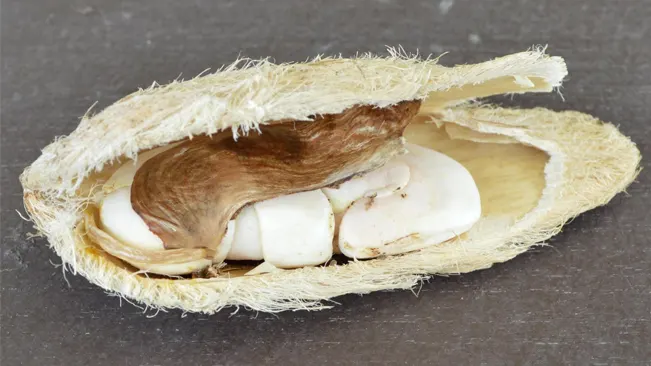
4. Speeding Up Germination (Scarification)
- What is Scarification?: This process involves gently scratching or nicking the surface of the seed. The idea is to break or weaken the outer coating to encourage water absorption and speed up germination.
- How to Scarify: Use a file or a small piece of sandpaper to lightly scratch the surface. Be gentle; too much force can damage the seed.
- Caution: This method is optional and should be done carefully. Over-scarification can harm the seed.
Soil and Climate Requirements
Soil Requirements
- Well-Drained Soil: Mango trees cannot withstand waterlogging. Therefore, soil that allows for quick drainage is essential. This helps prevent root rot and other water-related diseases.
- Fertility: The soil should be rich in essential nutrients. Fertile soil supports the vigorous growth of the tree and its ability to bear fruit. Adding compost or well-rotted manure can enhance soil fertility.
- Organic Matter: High organic matter content improves soil structure, nutrient content, and water retention capabilities. It also encourages beneficial microbial activity.
- pH Level: Mango trees prefer slightly acidic to neutral soil, typically within a pH range of 5.5 to 7.5. Soil pH outside this range can hinder nutrient absorption.
- Soil Depth and Composition: A deep, loamy soil is advantageous as it allows roots to penetrate deeply. Sandy loam to clay loam soils are preferred for their balance of drainage and nutrient retention.
Climate Requirements
- Tropical or Subtropical Climate: Mango trees naturally thrive in warm climates. They require a long period of warm, relatively dry weather to produce the best fruit.
- Temperature Range: Ideal growing temperatures range from 70°F to 85°F (21°C to 29°C). They are sensitive to frost and temperatures below 32°F (0°C) can be damaging, especially to young trees.
- Warmth and Sunlight: Mango trees need full sun exposure for healthy growth and optimal fruit production. They should receive at least six hours of direct sunlight per day.
- Rainfall and Humidity: While mango trees need adequate moisture, especially during the early growth stages, excessive humidity or rainfall can lead to fungal diseases. A balance of moderate rainfall and dry periods is ideal.
- Wind Protection: Strong winds can damage the tree and its fruit. In windy areas, planting windbreaks or choosing a sheltered location can be beneficial.
Additional Considerations
- Adaptability: Some mango varieties have adapted to less-than-ideal conditions. For instance, certain types can tolerate cooler climates or different soil types.
- Microclimate: Creating a favorable microclimate, such as using mulch to regulate soil temperature and moisture, can enhance growth conditions.
- Water Management: In the absence of regular rainfall, supplemental watering is important, especially for young trees. However, avoid overwatering.
- Climate Change Impact: Changing climate conditions can affect mango cultivation. It’s important to observe local weather patterns and adapt cultivation practices accordingly.
Planting the Mango Seed
Planting in a Pot
- Pot Selection: Choose a large pot with adequate drainage holes to accommodate the growth of the mango seedling. A pot that is too small can restrict the growth of the root system.
- Soil: Use a well-draining potting mix, ideally one that is rich in organic matter. Mangoes prefer slightly acidic to neutral soil.
- Watering: Keep the soil consistently moist but not waterlogged. Over-watering can lead to root rot.
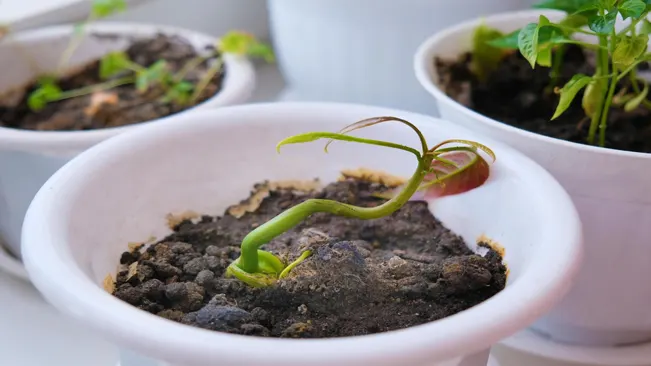
Planting in the Ground
- Site Selection: Choose a location where the plant will receive full sunlight for at least 6-8 hours a day. Mango trees thrive in warm, sunny environments.
- Soil Preparation: The soil should be well-draining and rich in organic matter. If your soil is heavy or clayey, consider amending it with compost or other organic material to improve drainage.
- Planting Depth and Orientation: Plant the seed flat, about 2-4 inches deep in the soil. This depth ensures that the seed has enough coverage to maintain moisture but is not so deep that it struggles to sprout.
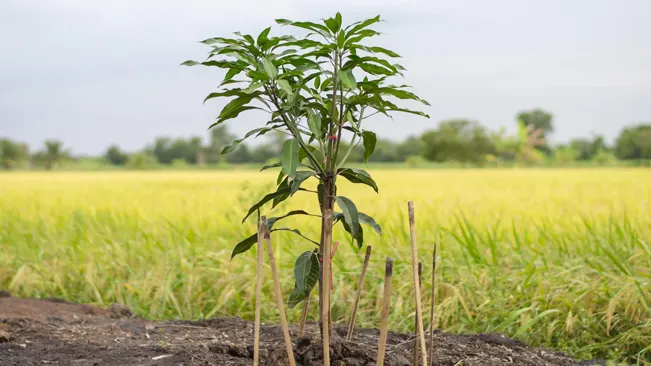
Spacing for Multiple Trees
- Space Requirement: If you plan to plant multiple mango trees, space them about 30-50 feet apart. Proper spacing is crucial for air circulation and sunlight penetration, reducing the risk of disease.
- Consideration for Future Growth: Mango trees can grow quite large. Account for their full-grown size when planting to avoid overcrowding in the future.

After Planting Care
- Initial Care: Keep the soil moist as the seed germinates and the seedling begins to grow. Avoid letting the soil dry out completely.
- Protection: Young mango plants can be sensitive to extreme temperatures. Provide protection from frost or intense midday sun if necessary.
- Fertilization: Wait until the seedling is established (a few months old) before applying any fertilizer. Then use a balanced fertilizer according to the product’s instructions.
Transplanting (If Started in a Pot)
- Transplanting Time: Once the seedling has outgrown its pot or has developed a strong root system, it can be transplanted into the ground. The best time for transplanting is during the warm, rainy season.
Care and Maintenance
Watering
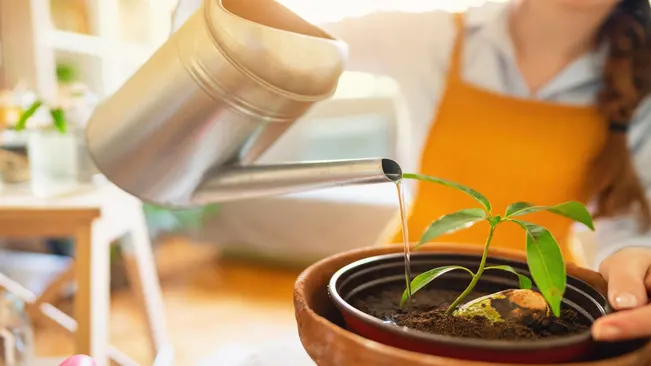
- Young Trees: Newly planted mango trees require consistent watering to establish their root systems. Water them every other day for the first few weeks, then gradually reduce the frequency.
- Established Trees: Mature mango trees are somewhat drought-tolerant but still require regular watering, especially during dry periods. Water deeply and infrequently, allowing the soil to dry slightly between waterings.
- Monitoring Soil Moisture: It’s important to check the soil moisture. The soil should be moist up to a few inches below the surface. Overwatering can lead to root rot and other fungal diseases.
Fertilization
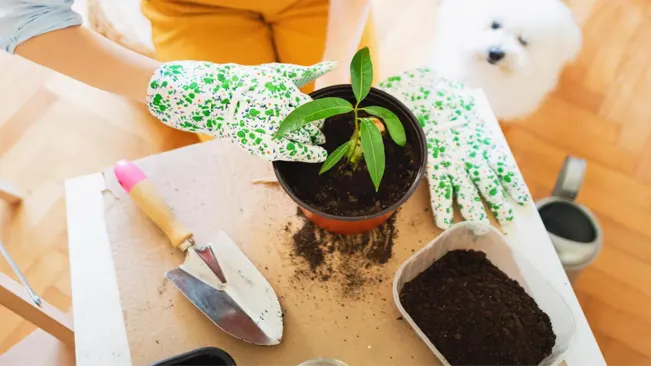
- Type of Fertilizer: Use a balanced fertilizer with equal parts nitrogen, phosphorus, and potassium (N-P-K). Organic options like compost or well-rotted manure can also be beneficial.
- Frequency of Application: Fertilize young trees every 2-3 months during the growing season. For mature trees, fertilize 2-3 times a year.
- Avoid Over-Fertilization: Excessive fertilization can lead to lush foliage at the expense of fruit production. It can also cause salt buildup in the soil, which can damage the tree.
- Application Method: Apply fertilizer evenly around the drip line of the tree, not directly against the trunk. Water the tree after applying fertilizer to help it soak into the soil.
Pruning
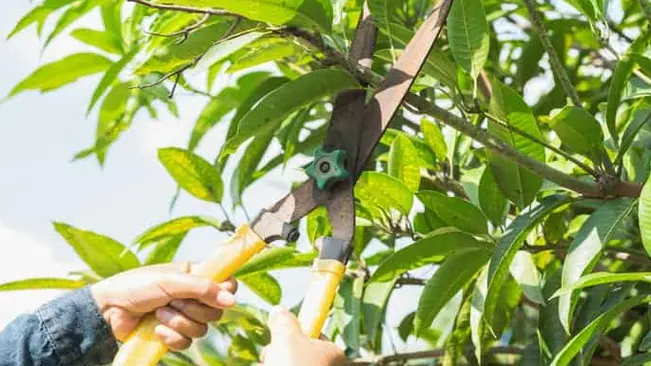
- Best Time to Prune: The ideal time to prune a mango tree is after the harvest, typically in late winter or early spring.
- Shaping the Tree: Prune to maintain a manageable tree height and shape. This makes harvesting easier and ensures even sunlight exposure.
- Removing Unwanted Growth: Cut back any dead, diseased, or overcrowded branches. Remove suckers and water sprouts that drain the tree’s resources.
- Thinning the Canopy: Thin out the canopy to improve air circulation and sunlight penetration. This is important for reducing disease pressure and promoting healthy growth.
- Tools and Techniques: Use clean, sharp pruning tools. Make clean cuts at a 45-degree angle, facing away from the bud or branch to encourage healthy new growth.
Additional Tips
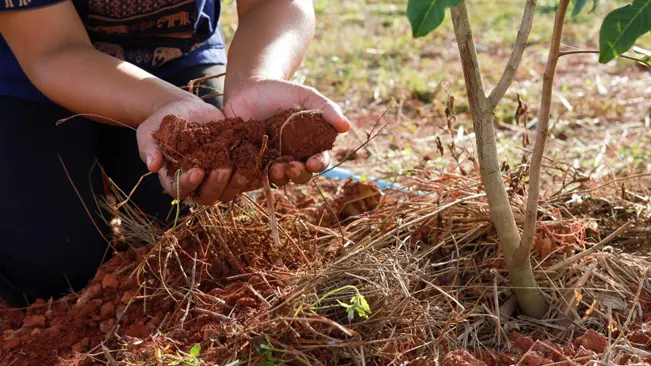
- Mulching: Apply organic mulch around the base of the tree to help retain soil moisture, regulate soil temperature, and suppress weeds.
- Seasonal Care: Be aware of your local climate and seasonal changes. Some regions may require specific care practices like frost protection or extra watering in hot seasons.
Common Challenges and Solutions
Pests and Diseases
Aphids
Description: Small, soft-bodied insects that can be green, yellow, red, or black. They suck sap from the plant, causing leaf distortion and reduced growth.
Solution: Use insecticidal soaps or neem oil for organic control. In severe cases, chemical insecticides may be required.

Mango Scale
Description: Tiny insects that attach themselves to the leaves and stems, appearing as small bumps. They suck plant juices, weakening the tree.
Solution: Prune affected areas. Apply horticultural oil or neem oil. In severe infestations, systemic insecticides might be necessary.

Anthracnose
Description: A fungal disease causing black spots on leaves, flowers, and fruit, leading to leaf drop and fruit decay.
Solution: Ensure good air circulation around the tree. Use fungicides, especially during the wetter months. Copper-based fungicides are often recommended.
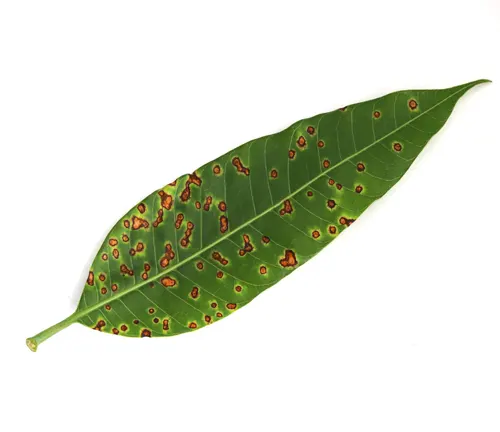
Preventative Measures
- Regular Inspections
Vigilantly inspect your mango tree for early signs of pests or disease. Early detection makes management much easier and more effective. - Proper Sanitation
Keep the area around the tree clean. Remove fallen leaves and debris as they can harbor pests and diseases. Prune the tree to remove dead or diseased wood. - Maintaining Tree Health
A healthy tree is less susceptible to pests and diseases. Ensure your tree is getting the right balance of water, nutrients, and sunlight. Use appropriate fertilizers and water the tree deeply, especially during dry spells. - Optimal Planting and Care
Plant the tree in well-draining soil to prevent root rot. Ensure there is enough space between trees for air circulation. - Mulching and Soil Care
Apply mulch around the base of the tree to retain soil moisture and suppress weed growth, but keep it away from the trunk to prevent rot. - Integrated Pest Management (IPM)
Implement IPM strategies, such as introducing beneficial insects that prey on harmful pests. Use pheromone traps or sticky traps for monitoring and reducing pest populations. - Climate Considerations
Be aware of your local climate and how it affects pest and disease prevalence. For instance, areas with high humidity are more prone to fungal diseases. - Resistant Varieties
If possible, choose mango varieties that are resistant to certain pests and diseases prevalent in your area.
Harvesting and Enjoying Your Mangoes
Ripeness
Color Changes
Mangoes often change color as they ripen, though this can vary by variety. Look for a deepening of color – greens may turn to yellow, reds and oranges may become more vibrant.
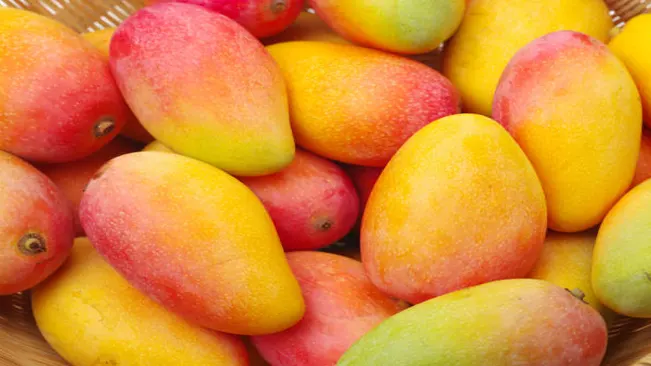
- Fragrance
Ripe mangoes emit a sweet, fruity aroma from the stem end. A stronger smell indicates a higher sugar content and more ripeness.
Texture
Gently squeeze the mango. Ripe mangoes yield slightly to pressure, indicating softness inside. They should feel soft but not mushy.

- Taste Test
If unsure, you can pick one mango and taste it. The flesh should be sweet and juicy.
Harvesting
Using the Right Tools
Use clean, sharp pruning shears or a knife. This ensures a clean cut and prevents damage to the tree and fruit.
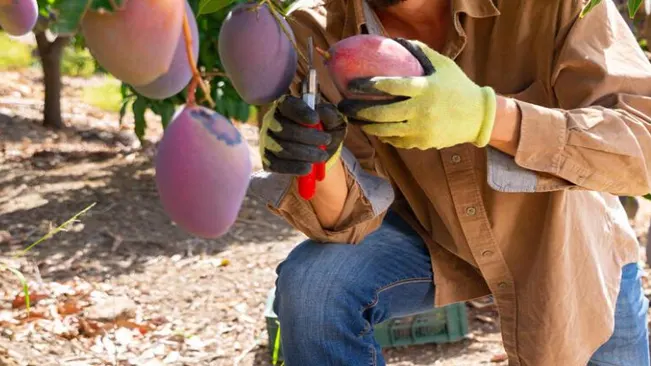
Cutting Technique
Cut the stem about a quarter-inch from the mango. Be careful not to pull or twist the mango off the tree, as this can cause damage.
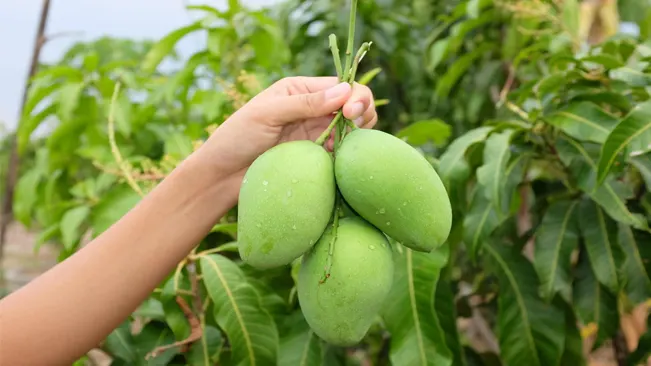
Harvesting Time
The best time to harvest is in the morning when temperatures are cooler. This helps maintain the fruit’s quality.
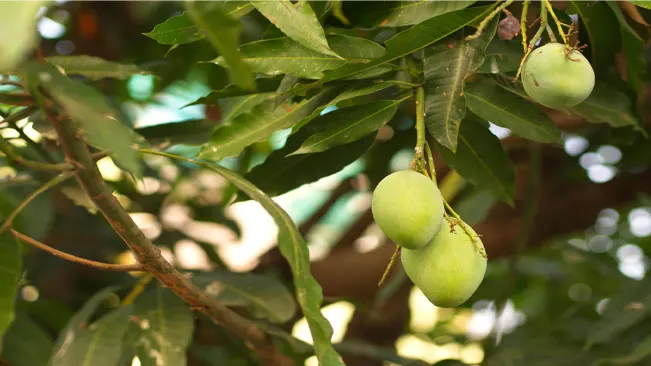
Usage and Preservation
Eating Fresh
Fresh mangoes can be eaten as is, sliced, diced, or scooped out with a spoon. They’re great in salads, salsas, or as a sweet snack.
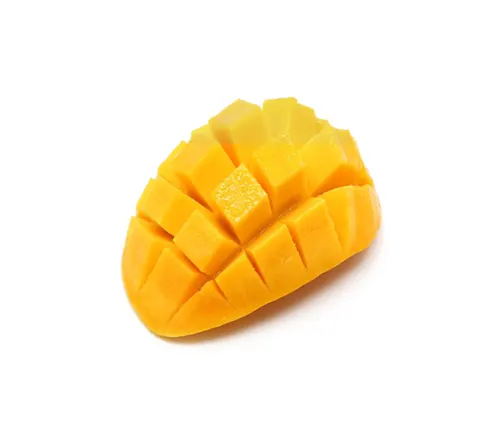
In Recipes
Use mangoes in smoothies, desserts, chutneys, and savory dishes. Mango pairs well with fish, chicken, and in various Asian and tropical cuisines.
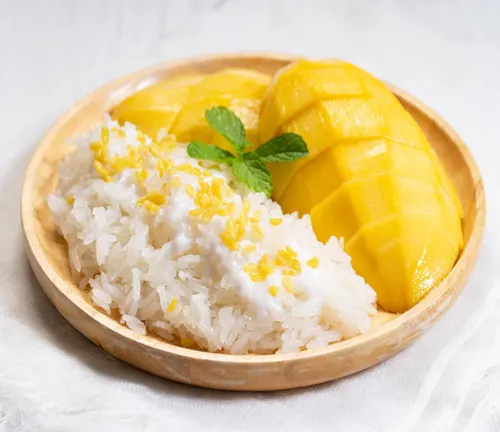
Drying
Slice the mangoes thinly and dehydrate them to make dried mangoes, a healthy and delicious snack.
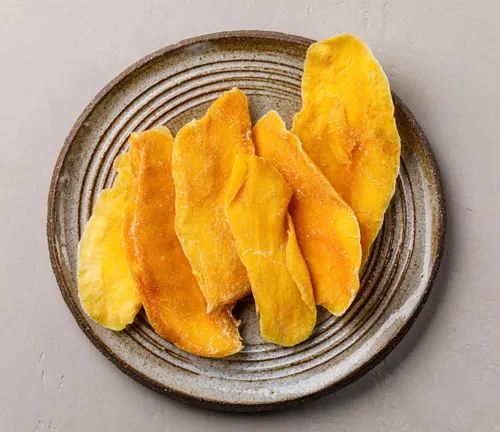
Freezing
Cut mangoes into cubes and freeze them on a tray. Once frozen, transfer them to a freezer bag. They’re perfect for smoothies or as a cold treat
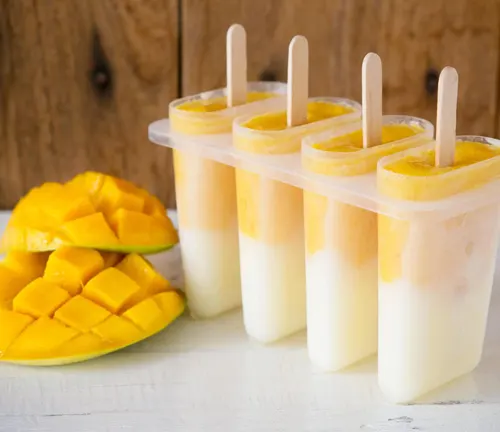
Making Jams and Preserves
Mangoes can be cooked down with sugar and pectin to make jam. This preserves their flavor and extends their shelf life.

Canning
Mangoes can be canned in syrup, making them last for months. They can be used later in desserts or as toppings.
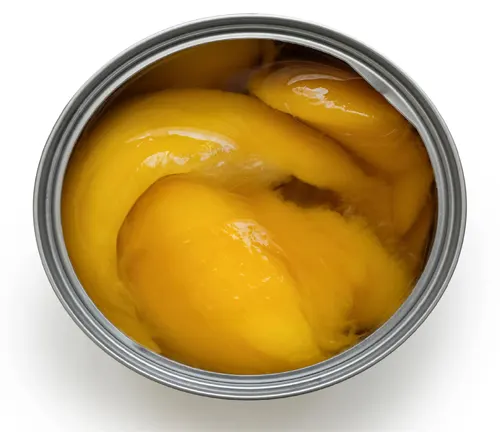
Pickling
Unripe mangoes can be pickled in a mixture of vinegar, water, sugar, and spices, offering a tangy and spicy treat.
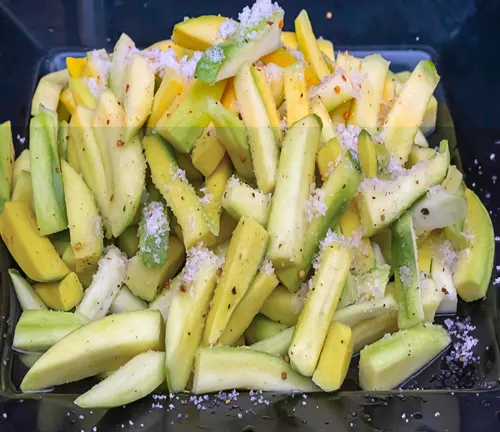
Conclusion
Growing a mango tree is a fulfilling process that offers the sweet reward of fresh mangoes right from your backyard. With patience, care, and attention, you can enjoy the fruits of your labor and relish in the joy of gardening. Encouraging others to embark on this journey, we see that the beauty of planting a mango seed extends beyond the fruit—it’s about growth, learning, and connecting with nature.
FAQs (Frequently Asked Questions)
- How do I select the best mango seed for planting?
Choose a seed from a healthy, ripe mango. The seed should be full, plump, and without any cracks or holes. - Can I plant a mango seed from a store-bought mango?
Yes, you can plant a seed from a store-bought mango, but ensure it’s ripe and the variety is suitable for your climate. - How long does it take for a mango seed to germinate?
It typically takes 1 to 3 weeks for a mango seed to germinate, depending on the variety and environmental conditions. - Do I need to remove the outer husk of the mango seed before planting?
Yes, gently open the hard outer husk to reveal the actual seed, which is more sensitive and requires moisture to germinate. - What type of soil is best for planting a mango seed?
A well-drained, fertile soil rich in organic matter with a slightly acidic to neutral pH is ideal for mango seeds. - How much sunlight does a mango seedling need?
Mango seedlings require plenty of sunlight. Place them in a location where they can get at least 6-8 hours of direct sunlight daily. - When should I transplant my mango seedling into the ground?
Transplant the seedling when it’s strong enough, typically when it has developed a robust set of true leaves and the stem is sturdy. - How often should I water a mango seedling?
Water the seedling regularly to keep the soil moist but not waterlogged. Reduce watering during the cooler months. - What are common pests or diseases that affect mango seedlings?
Common issues include aphids, mango scale, and fungal diseases like anthracnose. Regular monitoring and appropriate treatments are necessary. - Can I grow a mango tree in a pot?
Yes, mango trees can be grown in large pots, but they may need to be transplanted to the ground or larger pots as they grow.

Kristine Moore
Forestry AuthorI'm Kristine Moore, a seasoned garden landscaping professional with over 30 years of experience. My extensive career has been dedicated to transforming outdoor spaces into stunning, sustainable landscapes. With a deep understanding of horticulture, design principles, and environmental stewardship, I have become a respected figure in the field, known for creating harmonious, visually appealing, and eco-friendly gardens. My commitment to excellence and continuous learning in landscaping trends and techniques has solidified my reputation as an expert in garden design and implementation.

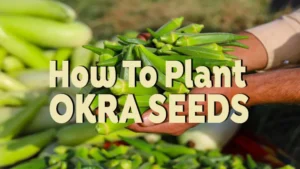



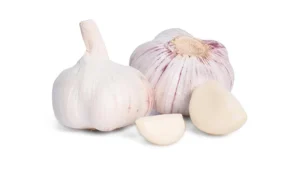

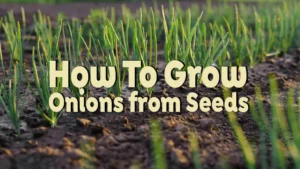
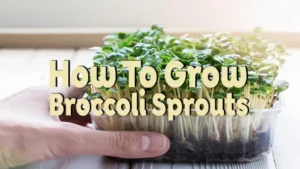
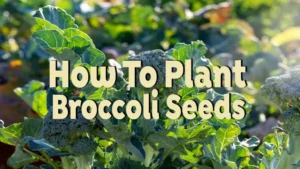
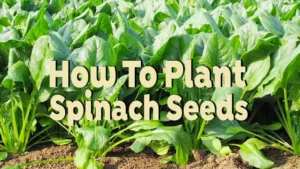
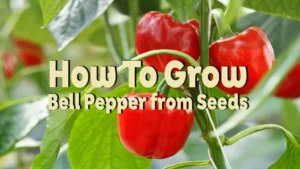
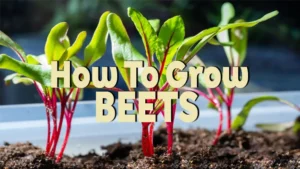
Leave your comment